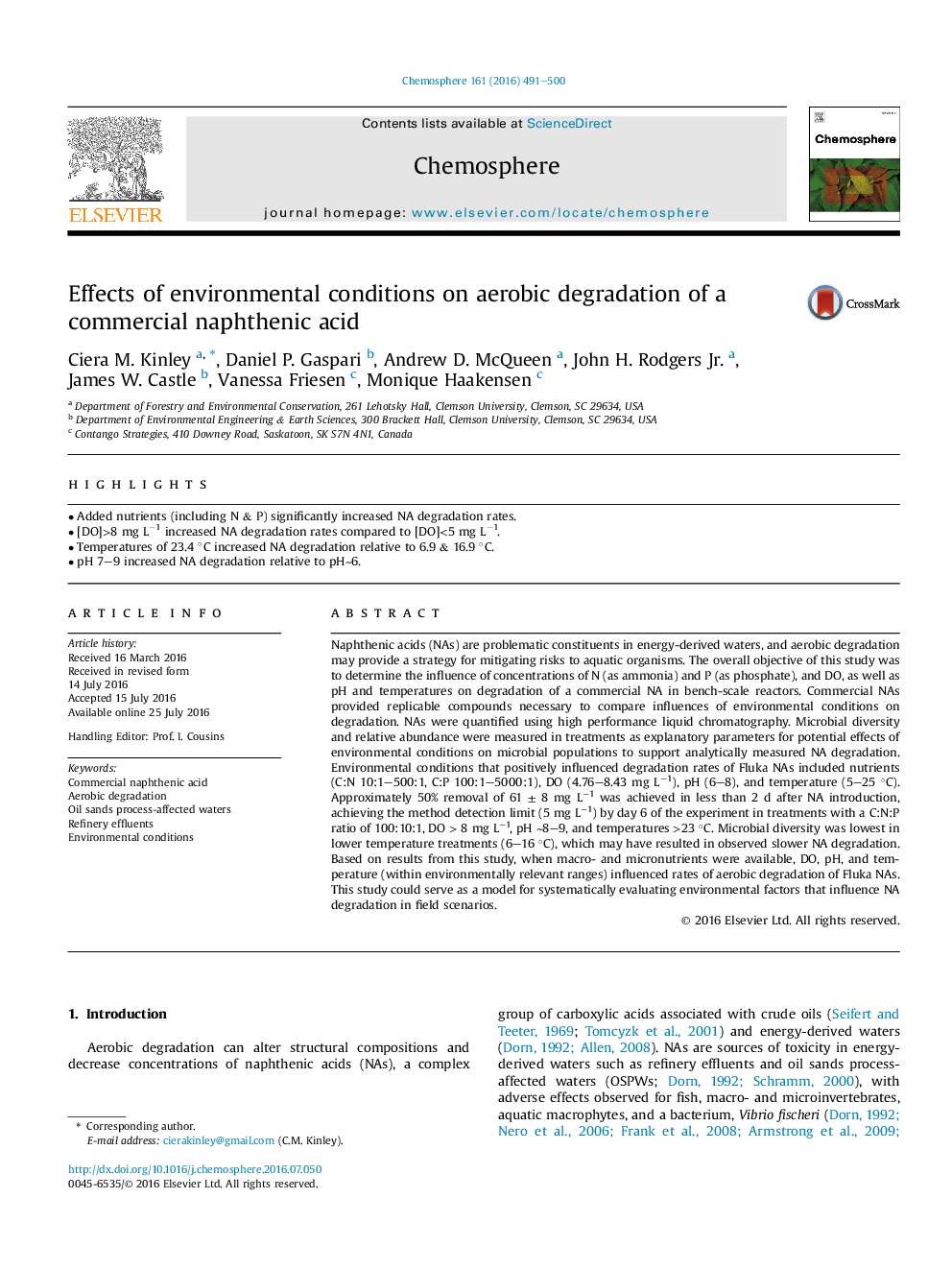| کد مقاله | کد نشریه | سال انتشار | مقاله انگلیسی | نسخه تمام متن |
|---|---|---|---|---|
| 6306506 | 1618810 | 2016 | 10 صفحه PDF | دانلود رایگان |
- Added nutrients (including N & P) significantly increased NA degradation rates.
- [DO]>8 mg Lâ1 increased NA degradation rates compared to [DO]<5 mg Lâ1.
- Temperatures of 23.4 °C increased NA degradation relative to 6.9 & 16.9 °C.
- pH 7-9 increased NA degradation relative to pHâ¼6.
Naphthenic acids (NAs) are problematic constituents in energy-derived waters, and aerobic degradation may provide a strategy for mitigating risks to aquatic organisms. The overall objective of this study was to determine the influence of concentrations of N (as ammonia) and P (as phosphate), and DO, as well as pH and temperatures on degradation of a commercial NA in bench-scale reactors. Commercial NAs provided replicable compounds necessary to compare influences of environmental conditions on degradation. NAs were quantified using high performance liquid chromatography. Microbial diversity and relative abundance were measured in treatments as explanatory parameters for potential effects of environmental conditions on microbial populations to support analytically measured NA degradation. Environmental conditions that positively influenced degradation rates of Fluka NAs included nutrients (C:N 10:1-500:1, C:P 100:1-5000:1), DO (4.76-8.43 mg Lâ1), pH (6-8), and temperature (5-25 °C). Approximately 50% removal of 61 ± 8 mg Lâ1 was achieved in less than 2 d after NA introduction, achieving the method detection limit (5 mg Lâ1) by day 6 of the experiment in treatments with a C:N:P ratio of 100:10:1, DO > 8 mg Lâ1, pH â¼8-9, and temperatures >23 °C. Microbial diversity was lowest in lower temperature treatments (6-16 °C), which may have resulted in observed slower NA degradation. Based on results from this study, when macro- and micronutrients were available, DO, pH, and temperature (within environmentally relevant ranges) influenced rates of aerobic degradation of Fluka NAs. This study could serve as a model for systematically evaluating environmental factors that influence NA degradation in field scenarios.
Journal: Chemosphere - Volume 161, October 2016, Pages 491-500
